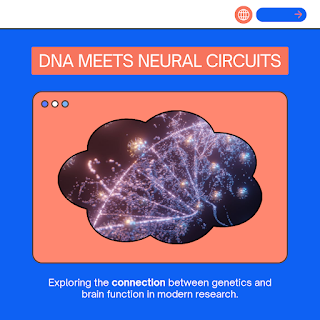Latest Research on Genetic Links to Autism Spectrum Disorder
By: Neuronest collective Team
Autism Spectrum Disorder (ASD) is highly heritable, with genetics contributing around 80 % of risk . Recent breakthroughs are pulling back the curtain on hundreds of genetic variants that shape neurodevelopment—offering new diagnostic tools, deeper biological insights, and future-targeted therapies.
---
2. Breaking Genetic Discoveries
🌟 DDX53 & PTCHD1‑AS on the X Chromosome
A landmark study in American Journal of Human Genetics linked variants in DDX53, predominantly in males, to ASD . This also implicates nearby gene PTCHD1‑AS, highlighting how X‑linked variants may help explain ASD’s male-skewed prevalence and open avenues for male-specific diagnostics.
🧬 Emerging Genes from Diverse Populations
UT Southwestern’s WES analysis (195 families) uncovered novel rare variants in 120 candidate genes—with known pathogenic variants identified in about 30 % of ASD individuals . These findings underscore that up to 1,000 genes may contribute to ASD risk, particularly when including underrepresented ancestries.
🌱 De Novo Mutations & Synaptic Genes
Studies in regions like Qatar and East Asia further spotlight de novo mutations and CNVs in synaptic regulators such as SHANK3, CNTNAP2, RBFOX1, ASH1L, and GABRB3 . These reinforce ASD’s synaptopathy hypothesis—where disruptions in synaptic structure and function are central to the disorder.
---
3. From Gene to Brain
🧠 PsychENCODE: Gene Expression across Brain Layers
The UCLA-led PsychENCODE initiative precisely maps gene activity to specific cell types and cortical layers, linking ASD risk genes to downstream molecular changes—an essential bridge from DNA to brain physiology .
🧪 Functional Networks Inform Causal Gene Discovery
Machine learning tools, such as network‑based propagation models, are integrating multi‑omic datasets to prioritize ASD‑relevant genes—surpassing previous prediction accuracy (AUC ≈ 0.87) .
---
4. Gene–Environment & Epigenetics
Prenatal Exposures & Epigenetic Modulation: Environmental factors like maternal age or toxins may tweak DNA methylation and histone deacetylation in utero, altering gene expression patterns related to synaptic formation and ASD risk .
Immune Activation & Brain Organoid Studies: Early embryonic immune responses and aberrant growth in cortical organoids correlate with later ASD severity—paralleling genetic origins .
---
5. Implications for the Future
Area Implication
Diagnostics Incorporating ASD genetics into early newborn screening panels, using DDX53 and others, could refine accuracy—especially for early male detection.
Personalized Interventions Knowledge of functional gene effects (e.g., synaptic vs. epigenetic) may enable targeted therapies, e.g., drugs for excitation/inhibition balance or epigenetic modulators.
Inclusive Genomics Studying ancestrally diverse cohorts continues to uncover population-specific genes, enriching global understanding and therapeutic relevance.
Ethical & Clinical Translation Polygenic risk combined with early brain/imaging markers may predict ASD before symptoms emerge—prompting discussions around privacy, testing, and early interventions.
---
6. Conclusion
Cutting-edge genetic research is illuminating ASD’s complex architecture—revealing new genes, epigenetic pathways, and brain-level signatures. These insights are reshaping how we diagnose, understand, and eventually treat ASD. While challenges remain, the discovery of markers like DDX53 and cell-type-specific molecular alterations via initiatives like PsychENCODE mark significant strides toward precision medicine for neurodevelopment.




Comments